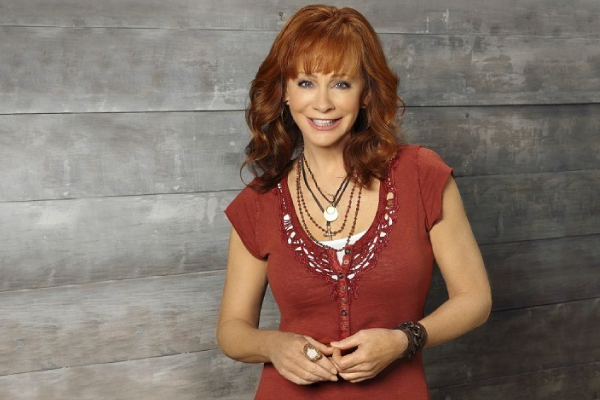Nastaran Dibai has written for big hit TV sitcoms including “The Nanny,” “According to Jim,” and her latest project, “Hope and Faith” starring Kelly Ripa. But being a writer and moving up to being an executive producer has not been an easy feat! As a woman in
Hollywood, getting her foot in the door was crucial in getting her
career started. With her husband Jeffery Hodes as her writing partner, together they have indeed moved up the ladder. From getting their scripts rejected by agent after agent to being asked to take over the show “Hope and Faith” starting this August, the road has been a long one but well worth all the hard work!
Q. Tell us a little about your background as a writer
A: I have a BA in communication studies from Concordia University in Montreal, Canada, where I specialized in Film and Television. After that I did
a fellowship at the American Film Institute in Los Angeles, where I specialized
in Cinematography.
Q. How did you get into writing/ producing for sitcoms?
A: This is sort of a long story. After finishing my studies at Concordia University, I was living in Montreal and mostly working in documentaries for The National Film Board of Canada (NFB). I worked on many documentaries ranging in topic from Uranium mining in Canada to disabled women to the year of the shelter for the United Nations. My documentary experience at the NFB took me around the world to places like the Philippines, Japan, Kenya, and the Canadian Arctic. Although, the experience was valuable and rewarding, I always felt I wanted to be involved in more commercial things.
That’s when I decided to apply for a fellowship at the American Film Institute (AFI) in Los Angeles. At the time, I was interested in camera work and my experience in Montreal had been mostly in the field of cinematography. Therefore, I applied to the cinematography program at the AFI. It was a very competitive process where I had to submit a portfolio and go through a lengthy interview in order to be accepted. (The AFI program is very hard to get into and only a small percentage of people applying end up getting accepted. It has gotten even more competitive since I was there in 1985.) That was the experience that changed the course of my life, because that’s when I was exposed to the American way of doing things.
After I graduated from the AFI program I headed back to Montreal to see if I could find work in a more commercial venue, but that proved to be difficult. It’s always hard getting work in the entertainment industry, but when you’re a woman and you’ve trained in a technical side (cinematography), it’s even harder. I had work, but it was very sporadic. So, having already been bit by the Hollywood bug, I headed back to L.A.
While I was trying to get settled and looking for work, a friend of mine asked if I wanted to work as his assistant in order to make some money. This was a friend I went to school with in Canada and he had moved to L.A. in order to pursue a career in writing. He had a difficult time starting out, but eventually he got on a show and started to work consistently. I planned on continuing my search for work in cinematography, but in the meantime I figured I could work as my friend’s assistant in order to make some living cash. However, as I watched him work, I started to think maybe I could take a stab at writing for sitcoms. I always enjoyed writing and everyone always said I was funny. I figured, why not. And I realized writers make very good money – much better than cinematographers. Besides, I had my friend, who was already an established sitcom writer who could give me guidance. He told me in order to get an agent and get in the door I need to write a “spec” script. “Spec” is short for speculation, which meant I would have to write a sample script from an already existing show. At the time, I was working at a studio where there were many writers, like my friend, and each of those writers had assistants, like me. I soon saw that most of the assistants were also aspiring writers. We would all go out to lunch and talk about how we were all working on our “spec” scripts and trying to get agents to represent us. One of those assistants was a really smart, funny, man who I really enjoyed talking to about writing and life in general. So, we decided that we would become a writing team and write our spec script together. Long story short, sixteen years later, that man (Jeffrey Hodes) is now my husband and my writing partner. In the beginning, everytime we got together to work on our spec script it was a date.
We got married soon after we met (about 8 months later), and struggled for a few years writing spec script after spec script and getting turned down by agent after agent. But we had confidence in our work and we just kept plugging along. If I’d ever realized how hard the road ahead would be when I started, I don’t think I would’ve pursued a career in writing, but when we were in the middle of doing it, we just kept our eye on the prize. After many rejections and lots of maybe-we’re-not-good-enough-to-do-this discussions, we were finally able to land our first agent. Through him we got several free-lance assignments, but our ultimate goal was to be on the writing staff of an existing show. Eventually, we got our first job on staff and the person who gave us the job was, guess who,
my friend who hired me as his assistant. Since then we’ve worked our way up the ladder.
Q. Has comedy always come naturally to you?
A: I wouldn’t say I’m the funniest person in the world, and I’m certainly not stand-up funny, but I’ve always been able to make people laugh. I’ve always had an affinity for American sitcoms. Even when I was growing up in Iran (I moved when I was 9), I remember watching episodes of “I Love Lucy” endlessly. I couldn’t get enough of them and I’ve probably seen every episode over 20 times. When my family and I moved to the U.S. and then to Canada, I grew up watching classic American sitcoms like “All In The Family”, “Maude”, “The Mary Tyler Moore Show”, “The Bob Newhart Show”, and “The Carol Burnett Show.” Later in my teens I enjoyed, “Happy Days”, “The Love Boat”, “Taxi”, and the sitcom that made me want to do this for a living, “Cheers”. My parents worried that I watched too much TV, but I learned the English language and American culture watching those shows, and now that I’m making a living doing it, I guess they feel it wasn’t all wasted time sitting in front of the TV.
Q. What challenges have you faced in the course of your career?
A: The biggest challenge we faced was actually getting our foot in the door when we first started. Finding and agent, getting that first job, and doing well enough to get hired again. However, there are always challenges along the way. One thing I’ll never get used to is rejection. It’s always hard and heart-breaking and it happens to everyone when they’ve been doing it long enough.
Q. What is the latest project you are working on?
A: In May of this year, we were asked by ABC and Touchstone Television to take over the show “Hope and Faith” with Kelly Ripa and Faith Ford as executive producers. However, in order to do this we had to move to New York City, where the show is shot. Almost all sitcoms are shot in L.A., but “Hope and Faith” is an exception. It has to be shot in New York because of Kelly Ripa’s schedule who also does Live With Regis and Kelly every morning and lives in NYC. After being on “According to Jim” for four years, we thought taking over “Hope and Faith” would be a good challenge for us. The network wanted to make some tonal changes to the show and we were pleased to know that they were willing to put their trust in us. We have not started production yet (it starts at the beginning of August), but so far we’ve done 5 weeks of pre-production and things seem to be on track.
Q. Any favorite moments?
A: My favorite moments on a show have always been when you write something and finally see it performed as you had imagined in your head, and it works. That rarely happens, but when it does,
it’s a great feeling.



